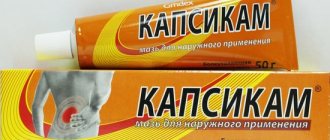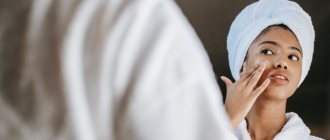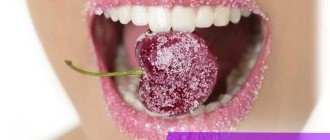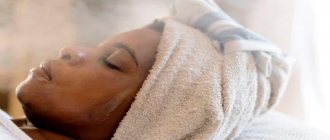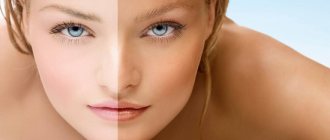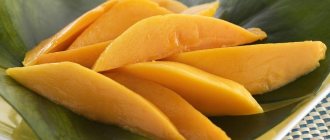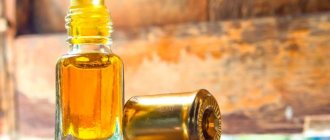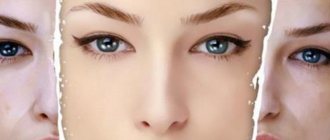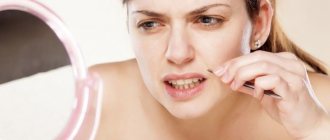Cleansing facial skin with oil is a physiological way to prevent the appearance of “blackheads” and keep pores clean. The idea of using vegetable fats for cleansing at first seems incredible. After all, in the minds of most people, cleansing is foam, gel, soap. Of course, one does not exclude the other, and cosmetologists recommend washing with foam after such cleansing to remove excess. If a significant oil film remains on the skin, especially on oily skin, then oxidation products will provoke acne and comedones. It is important to cleanse appropriately for your skin type after the procedure. If in doubt, remember that sebum is also a fat that the skin produces to protect and soften the skin. When there is little or much of it, then problems arise. Deep cleansing of the skin with oil is designed to remove excess and/or replenish lipid deficiency. It is important to choose the final cleansing option (foam, ubtan or without additional cleansing with anything) so that the resulting feeling is comfortable, the skin remains softened, and there are no clogged pores. Using oils instead of traditional soap helps protect the natural lipid layer and microbiome, increasing local immunity and resistance to pathogenic bacteria. The meaning is that “like is cured by like” (Latin: “Similiasimilibuscurantur”). In other words, the application of mixtures is intended for:
- removing excess sebum,
- cleansing clogged pores from oxidized sebum (“blackheads”),
- removing dead cells and makeup.
Oil, like sebum, is a lipid. Sebum easily dissolves in it and is then removed. At the same time, a thin oil film remains on the skin. Traditional cleansers can cause dryness and irritation. And as a result, lead to sensitivity, excessive sebum secretion on oily skin or, conversely, deprive dry skin of essential lipids. Oil cleansing is designed to balance surface skin fats and maintain the natural moisture of the skin. It must be remembered that the skin has a hydrolipid mantle. Therefore, for complete recovery it is necessary to apply a cream-emulsion. We often incorrectly define our skin type as oily and start using products with aggressive surfactants. As a result, the epidermal barrier is destroyed, the skin begins to dry out more, and in response, produce even more oil. Therefore, for owners of dry skin types, as well as oily ones, it is important to ensure the availability of the two main components of the hydrolipid mantle in leave-in care - water and fats. At the same time, cleansing itself can be based only on water-soluble components (foam, gel) or a fatty base (oil, hydrophilic oil). Let's talk about the second option in detail. Let's highlight several methods.
- Traditional cleansing with a mixture of castor oil.
- Removes stubborn face and eye makeup.
- Use of hydrophilic oil.
Chemical composition of castor oil
Castor oil is used as an antimicrobial and antifungal agent. The drug inhibits reproduction:
- viruses;
- mold;
- bacteria;
- yeast.
Castor oil solution is quickly absorbed into the skin, helping to moisturize it. The product has regenerating properties.
The product is extracted from castor beans through cold pressing or hot pressing and solvent extraction. The latter method is used to obtain low-quality castor oil.
Castor oil for acne includes saturated and monounsaturated acids. Ricinoleic monounsaturated acid predominates in the composition and occupies 85% volume. Other fatty acids contained in castor oil include:
- linoleic;
- oleic;
- stearic;
- palmitic;
- linolenic
The content of unsaturated fatty acids (UFA) reaches only 0.3%. The unique substances of the product do not allow it to dry out. Castor oil is not toxic. It can be taken as a dietary supplement.
The color of the product varies and can be either transparent or deep yellow. The product has a distinct odor and specific taste. Castor oil is considered the most viscous and dense. The product boils at a temperature of + 313 °C and freezes at - 16 °C.
Castor oil is not prone to oxidation or formation of bitterness if stored for a long time. The product is kept under a closed lid in a cool and dry place where direct sunlight does not penetrate.
How to use castor oil to treat acne.
Steaming castor oil
How to do it?
You should do this treatment at night right before going to bed. Take a pot of water and boil it. Once done, place it on the table and close the pan with a lid to trap the steam inside. Take a towel and lean over a pot of water. Cover your head and pot with a towel. Remove the lid and let the steam come into direct contact with your face. This will help open the pores. Continue for a couple of minutes.
After this, massage some castor oil on the acne-affected areas of your face. Go to bed with castor oil on your face. In the morning, remove the oil with a damp towel or mild facial cleanser. Splash some cold water on your face to close your pores. Repeat twice a week.
Castor oil and jojoba oil for acne.
How to use jojoba oil and castor oil to treat acne?
Take 3 tsp. jojoba oils. Add one teaspoon of castor oil. Mix and gently massage this oil mixture on your face. Soak a towel in hot water and place it on your face for 1-2 minutes. Remove the towel and wash your face with fresh, cool water. Repeat every second day.
Why does this work?
Jojoba oil has a liquid, waxy texture. This is very similar to the structure of our skin's natural sebum. Due to this, jojoba oil has the ability to penetrate the skin more easily than most other natural oils. Jojoba oil is very beneficial for treating acne. It has amazing moisturizing properties that help keep skin soft, supple and hydrated.
When used on the skin, jojoba oil can balance the oil production of the sebaceous glands and prevent the glands from overproducing oil, thereby helping to treat acne. In addition to this, this oil has natural antimicrobial properties that help get rid of acne and give you clear skin.
Along with this, jojoba oil is a good source of iodine. Iodine is a mineral that is extremely beneficial in preventing acne-causing bacterial growth and protects our skin from acne and other skin problems.
Olive oil and castor oil for acne.
How to use olive oil and castor oil to treat acne?
Again, you should do this at night before going to bed. Mix two teaspoons of olive oil and a teaspoon of castor oil. Set aside. Next, boil a pan of water and place it on the table. Close the lid.
Take a towel. Lean over a boiling pot of water and cover your head and pan with a towel. Remove the lid and let the steam come into direct contact with your face. This will open the pores. Now take a mixture of olive oil and castor oil and massage your face. Keep on skin overnight.
The next morning, remove the oil with a damp cloth or facial cleanser. Wash your face with fresh cool water. Repeat twice a week.
Why does this work?
Olive oil has amazing properties to fight acne. It has natural antibacterial properties, which play a big role in getting rid of acne. Being non-comedogenic, olive oil does not clog pores and can be used by all skin types, including sensitive ones. The high amount of antioxidants present in olive oil helps control free radicals, which can also cause acne.
Olive oil also has anti-inflammatory properties that reduce swelling, redness and inflammation caused by acne, as well as minimize acne scarring. Moreover, olive oil also has exfoliating properties for our skin. When massaged on the skin, it dissolves excess oil and other impurities present on the skin, unclogs the pores and helps treat acne.
Along with this, olive oil is a source of several vitamins and other vital nutrients that help in treating acne. It is rich in monounsaturated fatty acids, beta-carotenes, vitamin D, vitamin E, vitamin K , etc., which help repair skin damage and restore healthy, clear skin. The high amount of vitamin E in olive oil helps balance the pH level of the skin, which is very important to avoid skin problems such as acne.
Excessive oil production from the sebaceous glands is the main cause of acne. Olive oil helps prevent this. It keeps our skin hydrated by preventing the sebaceous glands from becoming overactive and limiting oil production. Regular use of olive oil results in soft, supple, glowing and healthy skin.
Baking soda and castor oil for acne.
How to use baking soda and castor oil to treat acne?
Here is another great way to use castor oil to treat acne. Take table soda. To this add required amount of castor oil. Mix and prepare paste. Cleanse your face thoroughly and apply the paste all over your face. Gently massage for a couple of minutes and leave for 5-8 minutes. Rinse off with fresh cool water. Repeat two or three times a week.
Why does this work?
Baking soda itself is an excellent remedy for fighting acne. When used in combination with castor oil to treat acne, you can certainly expect excellent results. Baking soda's slightly rough texture helps exfoliate the skin and remove all traces of dirt and impurities from the pores, clearing impurities and reducing hair loss.
Baking soda also has antibacterial and anti-inflammatory properties, which play an active role in getting rid of acne. The antibacterial properties of baking soda effectively kill acne-causing bacteria and clear the skin. The anti-inflammatory properties of baking soda, on the other hand, reduce the swelling and redness of pimples and also speed up the healing process.
Plus, baking soda has excellent absorbent properties. It helps absorb excess sebum present in the skin pores, thereby reducing the chances of clogged pores and controlling acne. The alkaline nature of baking soda is very beneficial in maintaining the ideal pH balance of the skin. Also helps to keep the skin healthy and free from acne, rashes, etc. Regular use of baking soda also helps reduce acne scars.
Turmeric and castor oil for acne.
How to use turmeric and castor oil to treat acne?
Take a generous pinch of turmeric powder and mix with required amount of castor oil. Prepare a paste and apply it to the acne-affected areas of your face. Gently massage in circular motions and leave for 15 minutes, then rinse with cool water. Repeat this remedy once a day.
Why does this work?
Turmeric has powerful acne-fighting properties. It contains "curcumin", which is a special compound with powerful antioxidant properties. Curcumin is extremely beneficial in treating acne. Research has shown that curcumin is 36 times more powerful than azelic acid when it comes to fighting acne.
Powerful antioxidant properties can effectively neutralize free radicals, which are one of the main causes of acne. Curcumin also has anti-inflammatory properties. Helps reduce swelling and redness of pimples and speeds up the healing process.
Additionally, curcumin is helpful in controlling sebum production and also absorbs excess oil from skin pores, thereby helping dry out pimples faster. According to studies, curcumin has the ability to reduce acne causing bacterial growth by 50% to 96%.
Turmeric has exfoliating properties for our skin too. When used on the skin as a paste, it exfoliates the skin and removes dirt and impurities that often clog pores and cause acne. Moreover, the antioxidant and exfoliating properties of turmeric also help in lightening acne scars and give us clear, clear and healthy skin.
Castor oil and coconut oil for acne.
How to use coconut oil and castor oil to treat acne?
Mix castor oil and coconut oil in 1:2 ratio. Keep aside. Boil a pan of water and place it on the table. Lean over the pan and remove the lid so the steam can hit your face. Quickly cover your head and the pot of boiling water with a towel. Hold for 5 minutes.
Remove the towel and wash your face thoroughly. Using your fingertips, gently massage the oil mixture onto the acne-affected areas of your face. Leave on for 20-30 minutes and then wash off with a mild cleanser. Repeat this remedy twice or thrice a week.
Why does this work?
Due to its deep cleansing effect, coconut oil is an ideal ingredient for treating acne-prone skin. Our skin remains exposed to environmental toxins such as dirt, pollution, and chemicals present in cosmetics, etc., which penetrate deep into the pores of the skin and clog them. And we all know that clogged pores lead to acne. When we massage coconut oil onto the skin, it dissolves impurities and unclogs the pores. This helps prevent acne to a great extent.
The antibacterial properties of coconut oil play an active role in treating acne. Coconut oil contains lauric acid, which has antibacterial properties. Lauric acid is one of the medium chain fatty acids that we find in coconut oil, and these MCTs are responsible for all the benefits that coconut brings to our skin. Regular use of coconut oil protects the skin from bacterial infections.
Excessive oil production from the sebaceous glands is the main reason that leads to breakouts as well as blackheads and whiteheads. Coconut oil helps keep the skin soft and hydrated, which further prevents the sebaceous glands from becoming overactive and stopping the production of excess oil. Thus, controlling breakouts.
Honey and castor oil for acne
How to use honey and castor oil to treat acne?
Wash your face with a mild cleanser or steam treatment as we discussed earlier. Take a teaspoon of castor oil and add some honey to it. Mix and spread evenly all over your face, paying special attention to the area where you have acne.
Gently massage the skin in circular motions for a few minutes and leave on for 10-15 minutes. Remove it with a damp cloth and rinse your face with cold water. Repeat two or three times a week to get blemish-free, clear skin.
Why does this work?
Honey is a very powerful acne remedy. It is loaded with antibacterial as well as anti-inflammatory properties that help get rid of acne-causing bacteria, especially P.acne bacteria. The antibacterial properties of honey prevent acne causing bacterial growth while its anti-inflammatory properties work great to heal the pain, swelling and redness of pimples and soothe irritated skin.
In addition, honey has an osmotic effect. This means that if we use raw honey on active acne, it will absorb moisture from the infected pores and thus make it difficult for acne-causing bacteria to survive. It then begins to release hydrogen peroxide, which is a natural disinfectant.
This helps to disinfect the pores and also kills the bacteria present there. Thus, honey helps active pimples dry out quickly and reduces the likelihood of further acne breakouts.
Honey contains gluconic acid, which is a type of AHA. It helps exfoliate the skin and remove impurities present in the top layer of the skin, thereby preventing clogged pores and reducing the risk of acne.
Honey contains many antioxidant compounds that play a huge role in eliminating acne and other skin problems and improving skin health. The antioxidant compounds present in honey fight free radicals and control acne caused by them.
Maintaining acid-base balance or pH balance is extremely important for maintaining healthy skin. Sometimes using harsh cleansers, cheap makeup products, etc. disturbs the balance and makes our skin susceptible to various problems including acne.
Honey, when applied regularly to the skin, helps balance the pH level of the skin. This in turn controls the production of sebum from the sebaceous glands and prevents the accumulation of oil on the skin, which is the main cause of acne.
Does castor oil help with acne and blemishes?
The product allows you to get rid of skin defects:
- acne;
- acne;
- post-acne.
The disappearance of acne is achieved due to the antiseptic and anti-inflammatory effects. The severity of post-acne is reduced, which is due to its regenerating properties.
Castor oil is useful not only for oily skin types and acne. Nourishing, softening, moisturizing properties can be used by owners of dry skin.
Rules for using castor oil for acne
Despite the many beneficial qualities of the product, you should follow the basic rules for its use:
- Frequency. Constant use of castor oil for acne is not considered beneficial. It is advisable to perform no more than 3 procedures within a month.
- Combination of various components. A product applied to the skin without the use of other beneficial products may cause allergic adverse reactions. Cosmetologists recommend using several components simultaneously, which enhance each other’s effects.
- Duration. It is not advisable to keep masks on your face for several hours. Otherwise, the appearance of swelling or bags in the area under the eyes cannot be ruled out.
- Temperature. To obtain the optimal temperature, it is necessary to heat the product using a steam bath.
- Preliminary preparation. The mixture must be applied to clean skin.
Attention! The duration of exposure to the castor mask is no more than 20-25 minutes.
What does zinc ointment treat?
Zinc has a pronounced anti-inflammatory effect, and in combination with petroleum jelly acts as a protector, forming a protective softening film on the skin. This allows the drug to be used for various injuries of the integument:
- diaper dermatitis;
- insect bites;
- mechanical injuries;
- abrasions, abrasions;
- bedsores;
- dermatitis, eczema;
- chickenpox rash, urticaria;
- other lesions, including infectious ones.
Due to its properties to disinfect, soften and whiten the skin, zinc ointment is popular as a cosmetic product. Its use helps smooth out fine wrinkles, even out facial tone, prevent inflammatory formations and other imperfections.
The drug loosens the stratum corneum of the epidermis, activates the process of regeneration and cell renewal, stimulates microcirculation, and prevents tissue damage from free radicals. As a result of regular use, the severity of facial folds decreases, pores narrow, microcracks, pigment spots and freckles disappear, and emerging pimples do not leave noticeable marks.
Combination of castor oil with other components
There are various ways to use the product for acne. Castor oil is often combined with other products. Adding beneficial ingredients increases the effectiveness of the effect. Cosmetologists advise adding the following components to castor oil:
- Oils. You can use peach or sesame, as well as olive oil solution. This combination is suitable for skin prone to flaking. Castor oil and other oils are used in a 1:3 combination. But if your skin is oily, you can mix grape seed oil and castor oil (proportions 1:3).
- Fruits or berries. The ingredients eliminate excess oiliness of the skin.
- Cucumber. The component has whitening properties, which is especially important for post-acne conditions.
- Eggs. Depending on the characteristics of the skin and the purpose of treatment, you can use either the yolk or the white.
- Fermented milk products. Typically, low-fat cottage cheese or kefir are included in the procedures.
Important! Castor oil can be used as an independent remedy. Various ingredients included in the mixtures can increase the effectiveness of procedures.
Removing stubborn makeup (eyes and face)
Try making your own makeup remover with a natural composition. Take light bases (for example, rice and jojoba), hydrolat cornflower or rose water, cotton pads. Wet it with dischydrol and apply oil to it. Gently apply the disc to your closed eyelids, lips or face (depending on where you are removing makeup) for a minute to allow the makeup to begin to dissolve. Carefully, without stretching the skin, remove the disc. Take a new one and repeat the algorithm until the cosmetics are completely dissolved. This method is effective for removing stubborn mascara, lipstick, and heavy foundation. Finish removing makeup with a foaming cleanser (if necessary) and wiping with floral water (to further remove residue). Then apply skincare cream. You can do without hydrosol and moisten the disc with hot water. This enhances the solvent properties of the oil (depending on temperature). But there are no beneficial properties of hydrolates.
Masks with castor oil for acne, blackheads and post-acne
To eliminate acne, experts recommend including natural castor oil in your care. The composition of the mask for acne is used depending on the type of skin.
Masks for normal and dry skin
To care for normal skin, the mask includes castor oil, lemon juice (1:1 ratio) and cucumber. The mixture is applied pointwise to the acne area. If the area to be treated is large, add 1 tablespoon of honey to the mixture. Instead of beekeeping product, you can use 2 teaspoons of kefir (high fat content).
A mask suitable for dry skin consists of the following components:
- castor oil – 1 tablespoon (tablespoon);
- banana pulp - 2 tablespoons;
- yolk – 1 pc.;
- honey – 1 spoon (teaspoon).
After preparing the mixture, apply it to the face in an even layer and wash off after 20 minutes. It is advisable to use the mask twice a week to soften and moisturize the skin, cleanse pores, reduce the number of acne and post-acne.
Masks for oily and problem skin
Cleansing oily skin is done by adding 1 tablespoon of black clay to the mask. The acne mask also includes the following components:
- a teaspoon of castor oil;
- 1 egg yolk;
- 5 drops of retinol (vitamin A).
It is advisable to keep the mask on your face for up to 30 minutes and apply it once a week.
Castor oil is used for problem skin and acne spots. To the castor oil add a pre-crushed Aspirin tablet, beaten egg white, 5 teaspoons of calendula flower decoction. The mask is applied three times after each layer has dried. The procedure is carried out twice during the week.
Important! Acetylsalicylic acid draws out impurities from pores. Over time, pimples dry out and skin tone evens out.
Principles of using castor oil for skin
Acne treatment begins with an allergy test. Apply 3-4 drops of the product to the wrist, rub and hold for 15-20 minutes.
Be sure to read:
The best recipes for products with blue clay: properties and use for the face, how to make it at home
What else to consider:
- Don’t get too carried away with castor oil: for a positive result, one procedure every 5-7 days with a full course of 1-1.5 months is enough;
- undiluted oil is used carefully; it is better to add the product to other creams or prepare homemade preparations with it;
- castor masks do not last long (especially before bedtime), otherwise swelling and irritation of the skin appears;
- before use, the oil is heated by steam to reduce the viscosity;
- Before applying the treatment, the skin is thoroughly cleansed (wash with warm water);
- Application time for castor masks is no more than 20-30 minutes.
Note . Castor beans (from the spurge family) are poisonous. All botanical parts contain the highly toxic protein ricin and pyridine alkaloids. Because of this, the fruits are collected with special precautions to obtain the oily liquid. But ready-made medical castor oil is devoid of toxicity: dangerous compounds are eliminated by cold pressing and industrial cleaning.
Cleansing your face for acne with castor oil
Castor oil can be used to cleanse problematic skin. It is noteworthy that this product cleanses better than cosmetic lotions or tonics. This is due to the fact that when excess fat is removed, the skin independently replenishes the necessary balance, producing sebum in larger quantities. This is why the opposite effect is often observed when using various alcohol-based cleansers and toners.
Attention! Frequent use of various cleansers leads to the appearance of a significant number of acne.
Castor oil is not only a natural, but also an economical remedy. Castor oil cleanses the skin well and removes makeup. Using the product helps dissolve sebaceous plugs and maintain water-fat balance.
Before carrying out the cleansing procedure, you need to steam your face to open the pores. For this purpose, it is advisable to use a steam bath. You can add decoctions of chamomile or string to the water used. Then wipe the steamed skin with a cotton pad soaked in oil. After 10 minutes, excess oil solution is removed with a napkin.
Important! There is no need to wash off castor oil from the skin after cleansing it. The course of cleansing sessions is 14 days.
Precautionary measures
Castor oil against acne should be used with caution. Before first use, it is advisable to perform a test for allergic reactions.
Allergy testing
Experts warn that castor oil is a product that can cause allergies. That is why before using castor oil-based masks, you should conduct a test for the presence of individual intolerance. A few drops of the product should be applied to the skin in the elbow area. The product can be used for acne if there are no unwanted reactions.
Reference! The occurrence of undesirable reactions is associated with the content of ricinoleic and other acids.

